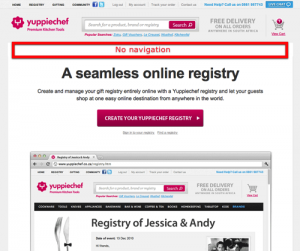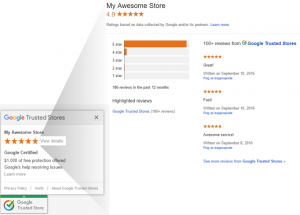Email open rates and click-through rates are witnessing a steady decline, recent research from Campaign Monitor has found.
While more than enough has been said about using a welcome email to build rapport, and about timeliness, and about subject lines, we seldom talk about what subscribers are looking for in email newsletters, a piece of knowledge without which lead-nurturing will fall flat.
Take a look at this: Content Marketing Institute reports that 87% of marketers use email campaigns to nurture their audiences, but half of those marketers, as Smart Insight finds, feel their email campaigns are very poor to average.
The reason should not be far-fetched: when you fail at nurturing leads, you fail at increasing your bottom line. Nurtured leads, Annuitas Group discovered, make 47% larger purchases than non-nurtured leads.
Marketo also found that companies that excel at lead nurturing generate 50% more sales-ready leads at a 33% lower cost.
As it is, you want to do all you can to ensure that your subscribers do not only open your emails but also consume your content. Because only then can you get them to see or do whatever you want.
But even in the face of wanton hard evidence, do you really think you can stand out enough to get someone that receives 121 emails per day on average to open yours every time? I mean unless there is an inherent reason they have to.
So, what are you supposed to do as a marketer to get continuous high open rates?
The answer lies in your welcome email. But before we get into why it is that way, let’s put down what you are going to do in one word:
Hyper-personalization.
Hyper-personification, as Business 2 Community puts it, is “the use of data to provide more personalized and targeted products, services, and content to targeted customers.”
These days, customers want the kind of messages that appeals to them in person, not one generic copy that simulates the kind of things they’ve seen over and over again on the web.
This affects their relationship vis-a-vis content type, content form, content time, and mode of consumption.
On my blog, I wrote a guide on “starting a blog” and another on ”starting a sports blog.” It turns out that those who clicked on how to start a sports blog spend more time on the blog than those who are reading about starting a blog, in general.
As you would not expect someone who wants to start a sports blog to go focus on starting blogs in general, learn the necessity of hyper-personalization in email marketing as well.
But since email marketing does not have a keyword research tool, to identify what they want in your newsletter then, you have only one shot and it comes when you are sending your welcome email.
Here is why: GetResponse has found that welcome emails have an 82% average open rate, making them one of the email types with the highest open rates, if not the highest overall.
Similarly, Inbox Army puts it this way: “welcome emails have on average 4 times the open rate and 5 times the click-through rate of a standard email marketing campaign.”
If you must get a high number of your readers to read your weekly email letters, your email open rate must be where you laid the foundation.
If you take the following steps, you will identify what kind of content your leads want to consume, how to use it to nurture them, and how to ensure it brings conversions.
1. Create multiple landing pages
It is true you have read about or tried out email segmentation before. They are mostly about website behavior, position in sales funnel, geographical area, demographic, etc.
Those are great ways to do it, but they only help you determine what kind of email you should send to them to get them to take a particular action, not something to keep them eternally attentive to your email and be expectant of it.
Take it or leave it, emails are fast becoming as bad as social media ads in terms of telling subscribers to buy a thing.
What we see regularly these days is usually an email asking customers to: to try out a new coupon before it expires, to join premium services, to get a discount rate, and all that jacks.
Asking, asking, asking without giving at all. You should stand out.
The fact that you are sending it once in a week/month won’t matter either. What will indeed help you stand out completely is to do exactly that: stand out.
Start by creating multiple landing pages.
The multiple landing pages you should create are meant to serve a purpose. Not all of them are meant to be found organically; if they can be found, good for you. If they can’t, no problem.
But their ultimate purpose is for them to introduce subscribers to a single content silo.
For instance, someone who subscribed to your content marketing email list may like to focus on how to write SEO optimized blog posts more than how to craft social media content.
Hence, when you send them a welcome email, don’t just tell them you are happy to have them around. Don’t ask them to look around your website and your other offers either.
Take a look at this welcome email from Zapier. It calls for subscribers to explore other things if they want to, and also sends them some links to learn more about using their tools.
While this is generally a nice email, it gives subscribers no reason as to why they should always open their newsletters whenever they see them.
You, instead, can go a notch higher by encouraging them to visit some landing pages, and replacing those links to articles with links to the landing pages where they can subscribe to their preferred content silo.
Say you run a blog — or a product — that deals with digital marketing, one link in your welcome email copy links to a landing page where they can subscribe to email marketing silo, another one links to a landing page where they can subscribe to social media marketing silo, and so on.
By doing this, you ride on the advantage of the high open rate of a welcome email which is a single shot. Don’t miss it.
2. Set up drip campaigns
In case you aren’t familiar with that term, drip campaigns refer to the marketing emails that are automatically sent out on schedule.
As soon as someone signs up, they get one or two emails, then in the next three or seven days, they get another email, then another, then another; all already programmed ahead.
So, how do you set up your drip campaign in this context?
Remember we said you should create multiple landing pages, each of them representing a specific content silo, and when you send out your welcome email, ensure it refers your subscribers to the several landing pages you have so that they can determine the kind of content they want to be receiving from you.
For your multiple signup landing pages to succeed then, a drip campaign is a given.
In light of that, observe the following rules to set up a proper drip campaign:
- Break down your content into easily digestible chunks: You see, when we talk about a blog post in content marketing, we emphasize in-depth. In email marketing, thoroughness matters here as well, but even more so is content that is super-focused on one topic. Let each email in your drip campaign come with just one topic.
- Make it interactive wherever possible: Are they going to be reading it in the form of a blog post? Then make the comment section active. Are they going to be watching a video? Then create a channel for discussion. Whatever form of content it is, engagement is necessary for deep connection.
- Analysis, Analysis, Analysis: I can’t stress that enough. No matter how scientific your marketing is, unless you continue to analyze and measure, you will be stuck in one place.
- Do not make your sessions too long, and do not make it too short. Research and brainstorm first to see for how long each silo campaign should last.
3. Diversify your content forms
As you have now established what topic your subscribers have interests in, now it is time to ensure diversity in your content forms.
Data abound when it comes to what form of content is gaining currency at a given time, and vicissitude of time and place also plays a crucial role.
For some, it is infographic while for others, it is video content. Some love their content written. Even at times, it depends on how they feel.
But if real attention is what you aspire for, which is what you should aspire for, then you need to do more than just create a common kind of content and leave it there.
If you are reading this in 2020 upward, I will tell you three data-driven forms of content that you can use to get the full attention of your leads and prospects.
Podcasting
Yes, you read that right. And I’m not about to tell you about the steady rise in numbers of podcast listeners, or about how 56% of listeners said they purchased an item after hearing it advertised on a podcast show.
Stick a fork in that! We are dealing with inbound marketing here.
Although 59% of podcast listeners prefer to listen to podcasts and 61% say they spend more time listening to podcast than watching the TV, as findings from Discover Pod confirm.
But like I said, none of that actually matters here.
What does matter is the fact that you want the pleasure of your content being consumed, you want to increase your overall email open rate, and there is something podcast that can do for you about it.
The Podcast Consumer 2019 report shows that 87% of consumers prefer to listen to podcast because they can do other things while also listening. The same report tells us that 78% of consumers listen to learn new things.
There you have it. The lure of wanting to consume content and wanting to actively listen to it in one place.
If a consumer has a preference for podcast because of its flexibility, and also wants to actively do the listening because she wants to learn a new thing, then you have all the weapons you need in one place.
On the one hand, your content will be read is guaranteed. On the other, that they will be engaged with is also assured.
Now if you are operating on a shoestring budget, you can check these podcast platforms out as some of them have free options with which you can kick-start.
The bottom line is: give your email subscribers all the options to get them engaged.
Education platforms
If you have seen the reports that I have about online course platforms, you may agree with me that no wise marketer can overlook the power of online course platforms anymore.
Oftentimes — not all times though — if you want to know where marketing is heading at any given moment, try and see what the marketing household names are doing, and try not to buck the trend.
In 2020 alone, Neil Patel has launched two online courses and promoted it through his email newsletter.
One thing you cannot miss if you had attended these courses is that as much as they are giving tons of knowledge out for free, they are also meant to promote his Ubersuggest.
Had it been that you have subscribed to the MarketinProfs email list as well, you’d know they sell a lot of courses through which they promote digital products.
You need attention from your leads? Set up an interesting online course for them to get them engaged. You can also go the way of MarketingProfs by charging them a little amount to access it.
Full-text emails
As you are possibly aware, most email readers do it from their smartphones. Findings after findings have proved that.
But making them click on a link to a blog post which opens further tabs on their browser is an entirely different level of stress.
If you have knowledge of how email marketing works, you will understand that the lower the entry barrier is, the easier it is for you to get results.
Now, when considering your content forms, one of the things you can easily do is to send a complete copy in the newsletter without the need for them to click on a link before they can access the full message. And in so doing, you reduce their level of stress and get the chance to hook them from the onset.
This certainly does not mean you cannot use your email list to invite people to read something or perform an action on your site. What it does mean is that, whenever sending an email to your email list, make it reasonably complete.
Conclusion
There you have it. Email marketing has become one of the most powerful tools in the arsenal of online marketers, but even as effective and powerful as it is, the results can be very poor if you fail to set about it the right way.
Every email marketer has an incurable obsession with increasing email open rates, you cannot be different and here is a novel way to do it.
Digital & Social Articles on Business 2 Community(33)
Report Post




